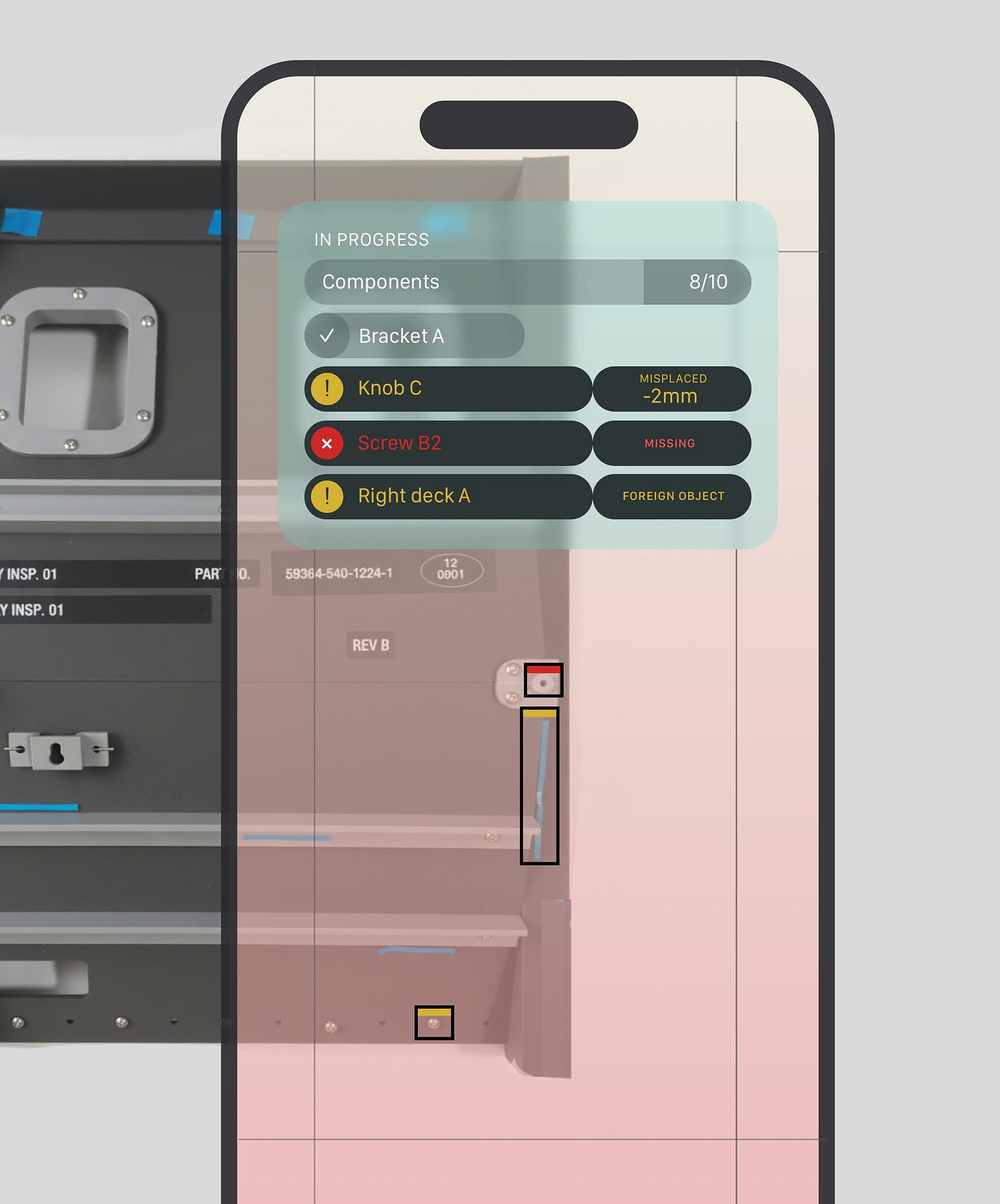The Roadmap for Inspection: What Comes Next
As mobile and adaptable inspection systems become standard, the next step is intelligent, multimodal, and integrated solutions — transforming quality control from a compliance burden into a driver of speed and competitive advantage.
Spiral Technology
For the past 7 years, our team at Spiral Technology has worked on quality control solutions across industrial manufacturing — from aerospace composites and wind turbine blades to precision machine components and non-destructive testing. We’ve seen firsthand how OEMs navigate the tradeoffs between accuracy, efficiency, and the organizational challenges of digitizing legacy processes.
In previous articles, we traced the shift from rigid inspection systems to mobile, software-first tools that adapt to the realities of high-mix, low-volume production. These advances have already changed the economics of inspection, making it feasible for smaller batches and more complex assemblies.
The foundation is in place, and the next step is to look ahead. What does realistic AI on the shop floor actually look like? Within the next 12 to 18 months, advances in multimodal AI, agentic workflows, and tighter integration with digital factory systems are likely to reshape how inspection contributes — moving it beyond compliance alone to a more active role in speed, reliability, and competitiveness.
High-level roadmap for automated quality control in medium-sized factory
1. Computer Vision for Narrow Inspection Tasks
At the heart of modern inspection remains computer vision. Today’s systems already handle part identification, configuration validation, surface anomaly detection, and OCR for markings. These are narrow, well-defined tasks that can be executed consistently at production speed. The foundation of any roadmap is to keep strengthening this layer with better data pipelines, synthetic augmentation, and faster retraining so that inspection keeps pace with high-mix, low-volume production.
Press enter or click to view image in full size

AVIS — illustration
2. LLMs for Higher-Order Reasoning
The next layer expands beyond vision alone. Large language models (LLMs) complement visual checks by drawing on standards, manuals, and acceptance criteria. Instead of requiring inspectors to manually cross-reference multiple documents, an LLM can consolidate rules, interpret tolerance stacks, and provide plain-language justifications for pass/fail calls.
For example: “Is a 0.5 mm edge deviation permissible under AS9100 when the bracket has a specific exception noted in Rev. C?” A multimodal system could fuse the measurement with textual rules and deliver a documented rationale.
This is not about replacing inspectors, but about providing decision support — reducing ambiguity, saving time, and strengthening auditability.
3. Agentic Workflows and ERP Integration
Beyond reasoning comes action. Agentic behavior does not mean surrendering control to machines; in regulated industries like aerospace, humans will always make the final call. But bounded autonomy is practical and valuable.
Inspection systems can already:
- Log nonconformances automatically in a QMS,
- Open corrective action records in ERP or PLM,
- Trigger notifications to operators upstream or downstream,
- Suggest corrective workflows based on historical cases.
By connecting these actions directly into ERP, PLM, or MES platforms, inspection results flow seamlessly across the digital factory. A failed check could instantly update a production schedule; a recurring surface defect trend could flag a supplier issue. Integration turns inspection from a cost center into a data engine that strengthens traceability, streamlines audits, and accelerates escalation.
4. AR-Guided Operator Support and Cloud–Edge Hybrid Learning
The outer layer combines several forward-looking extensions that broaden inspection’s role.
- Augmented operator guidance: AR overlays can direct inspectors to specific points on large assemblies such as wind turbine blades or aircraft structures. Instead of interpreting a 2D checklist, the operator sees exactly where to measure, what criteria apply, and whether prior issues were logged in that zone. This reduces training time, improves consistency, and makes inspection more intuitive.
Augmented reality applied for markring defects in the factory
- Predictive analytics: Aggregated inspection data can highlight recurring hotspots, shifting inspection from reactive detection to proactive prevention. If 70% of defects appear at one fastening stage, the system can prioritize checks there in future runs.
- Cloud–edge synergy: Edge devices will continue to handle low-latency checks, while cloud aggregation enables fleet-wide learning. A model improved at one site can be distributed to others, creating continuous improvement without reinventing the wheel at every factory.
Conclusion: From Burden to Advantage
The roadmap for inspection is not about replacing humans or imagining fully autonomous factories. It’s about augmenting people with smarter tools, reducing administrative load, and unlocking the hidden value of inspection data.
Multimodal AI, bounded agentic workflows, integration with enterprise systems, AR-guided inspection, predictive analytics, and hybrid cloud–edge models are all achievable within the next 12–18 months. None require speculative breakthroughs — only the careful application of technologies that already exist.
Learn more about AVIS — portable computer vision for high-mix, low-volume manufacturing. Verify component configuration, markings, and surface condition in real time using cameras your teams already own.